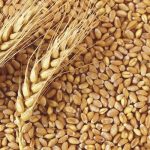If 2020 had been any close to a normal year, the global sugar industry would have held different possible scenarios sketched across the world currently not leaving experts solving the equation of the aftermath of the coronavirus pandemic.
In a recent interview with ChiniMandi, Mr. Michael McDougall – Managing Director at Paragon Global Markets, LLC, New York, USA shared his views on the global sugar scenario.
Sharing his views on consumption drop and the aftermath of the pandemic and global sugar market dynamics, he said “The initial impact of the pandemic was to cut demand for sugar. This was seen in various ways. Cola sales were hit as 50% of cola sales in the US at least are outside the home. Gas stations, restaurants, bars, etc. The lockdown cut road traffic and stopped restaurant and bar traffic. Even school activity, which for many poor people helps supplement the diet has gone remote. In India, the large holidays and family get-togethers (weddings, etc) were cut. The results of all these limitations was a drop in sugar consumption.
Road traffic has come back fairly quickly but appears to have stalled out and fallen back a bit. Restaurants have come back to some degree, but are still running only partial capacity. Many think that consumption will improve for the coming season as they expect a vaccine to be ready by the end of the year and economic activity will begin to improve even more. However, a word of caution, is that vaccines are not a given and the distribution of the vaccine(s) could take some time, especially globally. I see that India is looking at using the minimally tested Russian vaccine. If there are any unwanted side effects for the vaccines, we could see a big reluctance to take anything so any improvement in the global economy could be limited or at least sluggish. Complicating all this is certain economies are controlling the virus better (like China) and a global recovery will depend on all economies improving.”
“The general drop in sugar consumption globally for the 2019/2020 season is anywhere between 0.20 and 1.6% percent. There has been talk of drops as much as 5% but remember that consumption tends to follow population growth, which normally shows a growth of 1.0%. The consumption increase now expected for the 20/21 is a growth of between 0.4% to as high as 3.62% as shown by the USDA These are just estimates for now as consumption is much harder to determine, than production. “ He further added.
Answering on how he sees the global trade flow emerging from here given the production swing in major producing countries, McDougall said, “The global trade flow has shifted greatly as crude oil prices fell as much as 67% and is currently down 33%. The drop in prices is reflecting the drop in road traffic and therefore demand. This has caused ethanol consumption to fall roughly 18% from March through August. The ethanol parity as a result fell to as low as close to 9.0 cents a pound sugar equivalent. It is currently 10.40 cents, but that is still well below the current sugar level (close of Oct today was 12.62). This has caused the flexible mills in Brazil to increase sugar production substantially. So far sugar production has jumped by 43.76% which is 7.883 MMT above last year. Exports have jumped by even more, some 77.7% to 16.7 MMT, vs 9.4 MMT last year.
There has been a drop in various other countries, like Pakistan, the EU, and we will see a drop in sugar exports out of Pakistan. Indian exports which were aggressive early on at the beginning of the season have slowed substantially. There are questions as to when the new sugar season plan will be announced and their could be a delay in the harvest due to excessive rain. China appears to be restocking as they are with other commodities, and so far Brazil has shipped 2.882 MMT of sugar to China, substantially above last year.”
Being asked for views on the relevance of sugar future contracts with respect to India, McDougall commented, “Indian mills normally sell their sugar flat price, like to Iran for example. Futures are only needed if pricing of sales are done on a differential basis. A differential basis means the sales or purchase price is determined by the price level of the futures market and gives mills or consumers potentially more flexibility if they so desire. One can also use options on futures as well to give even more flexibility.
Brazilian mills are using futures extensively as they lock in a sugar price and forward markets as they lock in the currency. This way, with a weaker Real, the mills are already locking in positive margins for next years 2021, and to a lesser degree, 2022 and even 2023. Indian mills can’t do this as they are dependent on Government policy one year at a time, and in fact policy can change during the year.
The other advantage Brazilian mill have is that they can legally open their own futures account and remit money outside the country with no restrictions. In India, free movement of foreign exchange is not permitted for even hedging purposes.”
Audio PlayerTo Listen to this News click on the play button.
















